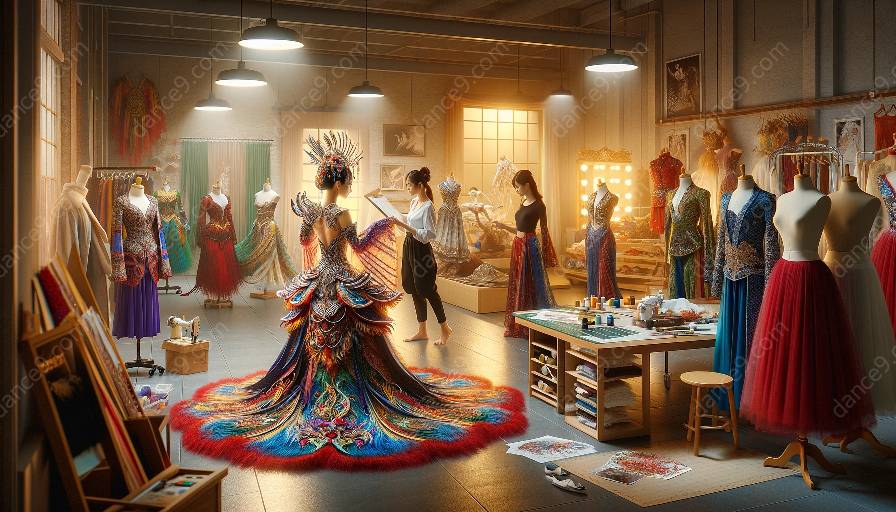When it comes to dance performances set in unique locations, the role of costume design takes on a whole new dimension. Site-specific dance performances offer an opportunity to seamlessly intertwine the art of dance with the environment, creating immersive experiences that engage both the performers and the audience in a dynamic relationship with space and movement.
The Intersection of Dance and Costume Design
In the realm of contemporary dance, costume design serves as an integral element that not only adds aesthetic appeal but also contributes to the narrative, characterization, and overall mood of the performance. In the context of site-specific productions, the design process becomes even more intricate as the costumes need to harmonize with the surroundings while allowing the dancers to move freely and expressively.
The Role of Site-Specific Settings
Site-specific performances often take place in unusual or non-traditional spaces, such as industrial buildings, urban landscapes, or natural environments. These unique locations present costume designers with the challenge of creating attire that not only complements the dancers' movements but also resonates with the specific characteristics of the chosen site. The costumes become an organic extension of the performance space, blurring the boundaries between art and environment.
Embracing Creativity and Innovation
Costume designers for site-specific dance performances are tasked with embracing creativity and innovation while considering practical aspects such as durability, weather resistance, and mobility. The designs must withstand the demands of the performance space, whether it involves rugged outdoor terrain or unconventional indoor settings, without compromising the dancers' ability to convey emotion and narrative through their movements.
The Synergy of Movement and Fabric
Within the context of site-specific dance, the relationship between movement and fabric takes on heightened significance. The costumes become kinetic sculptures, responding to the dancers' movements and the environmental elements that surround them. Fabrics may billow in the breeze, catch the light in unexpected ways, or interact with architectural features, adding an extra layer of visual interest to the performance.
- Accessibility and Inclusivity in Design
- Another crucial consideration in costume design for site-specific dance performances is the emphasis on accessibility and inclusivity. The garments must accommodate a diverse range of bodies and movement styles, ensuring that every dancer feels empowered and represented within the choreographic context. Moreover, the costumes should resonate with the audience, inviting them into an immersive sensory experience that transcends conventional stage-bound performances.
- Designing for Emotional Resonance
- The collaborative nature of site-specific dance opens up opportunities for costume designers to work closely with choreographers, set designers, and lighting technicians to create holistic experiences that evoke emotional resonance. By aligning the visual, kinetic, and spatial elements of the performance, the costumes contribute to a multi-sensory narrative that unfolds organically within the chosen site.
Challenges and Rewards
While costume design for site-specific dance performances presents its fair share of challenges, the rewards are equally profound. The process invites designers to push the boundaries of traditional garment construction and explore unconventional materials, textures, and forms. The resulting costumes not only enhance the visual impact of the performance but also deepen the connection between the dancers, the space, and the audience.
The Legacy of Site-Specific Costume Design
As the legacy of site-specific dance continues to evolve and expand, the significance of costume design in this context becomes increasingly recognized as an art form in its own right. By integrating elements of dance, spatial design, and material innovation, costume designers contribute to the creation of immersive and unforgettable performances that challenge the boundaries of traditional theatrical experiences.
Conclusion
In conclusion, costume design for site-specific dance performances represents a captivating fusion of artistry, functionality, and spatial awareness. By embracing the potential of unique performance environments, costume designers have the opportunity to elevate the expressive possibilities of dance, creating transformative experiences that resonate with both performers and audiences alike. The marriage of movement and fabric within the contextual tapestry of site-specific dance opens new avenues for creativity and sensory engagement, enriching the world of dance with the power of holistic design.











































